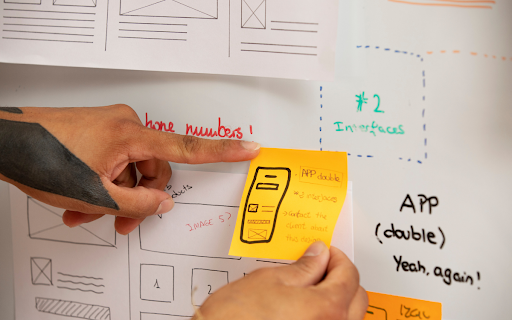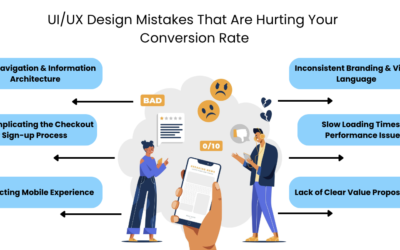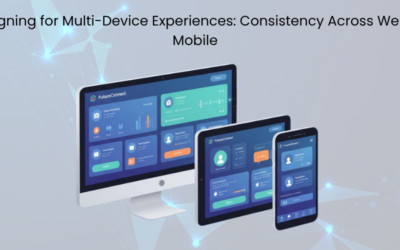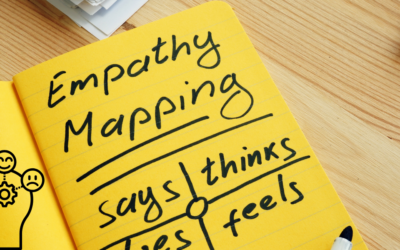When our founder spearheaded UX research for a leading super app in the MENA region, the results were remarkable, achieving a 20x increase in paid subscribers for its loyalty program. This success was driven not by assumptions but by in-depth research, behavioral insights, and a clear grasp of user motivations. Our founder has also led loyalty and subscription initiatives for major digital brands such as Careem, Domino’s, and Tata 1mg.
Still, one of the most common challenges even mature digital products face is silent churn. Not from new users. But from those once considered loyal.
In this article, we uncover what UX research teaches us about why engaged users leave, how product teams often miss subtle retention signals, and how to design loyalty programs that are genuinely valuable. If you’re working with or looking to partner with a ux research agency in Dubai, these insights are critical to long-term retention.

The Invisible Exit: Why Loyal Users Quietly Quit
The homepage is optimized. The loyalty program is live. Metrics show moderate satisfaction. So why are your most engaged users slipping away, without warning, complaint, or feedback? The answer lies in what users don’t say. That’s where UX research uncovers truths that analytics alone can’t see.What UX Research Uncovers About Loyalty Decay
Read More about UX Research here.1. Behavioral Shifts That Go Undetected
People’s lifestyle evolves. A product that once solved a key problem may no longer align with the user’s routine. UX Insight: Behavioral segmentation must be dynamic. What was once a core use case can fade unless monitored and revalidated. Action: Schedule recurring qualitative interviews every quarter to reassess user behavior. Supplement this with cluster analysis of product usage data.2. Loyalty Programs Misaligned with Perceived Value
A common pitfall is offering benefits that the business assumes are valuable, but users don’t perceive them as such. UX Insight: Run Gabor-Granger pricing surveys or conjoint analysis to test the perceived value of loyalty incentives. This reveals not only a willingness to pay, but willingness to engage. Action: Validate if the reward types resonate emotionally (e.g., exclusivity, access, surprise) or if they feel transactional and forgettable.3. Design Friction That Reduces Engagement
If accessing loyalty benefits is unintuitive or buried deep in the user journey, friction discourages participation. UX Insight: Reducing the steps between discovering a reward and redeeming it is critical. Many loyalty programs underperform because of poor visibility or unclear UX copy. Action: Run targeted usability tests on reward-related flows—evaluate not just ease of navigation, but also user comprehension and emotional response. You can also incorporate UX copy testing studies to assess the clarity and effectiveness of messaging.4. Mismatched Messaging Touchpoints
Loyalty messaging must appear at the right moment. If touchpoints are misaligned with user intent, they get ignored or worse, become noise. UX Insight: Users must encounter loyalty messaging at high-friction or high-delight moments, such as cart abandonment, post-purchase, or long session durations. Action: Use journey mapping to identify key moments where loyalty prompts can be most contextually impactful. Test their placement—in-app, via push notifications, or at checkout, and support decisions with A/B tests to determine what drives the highest engagement and conversions5. Unclear or Inconsistent Program Voice
Even the best program can fall flat if users don’t understand what it offers—or if the brand voice feels generic or disconnected. UX Insight: The tone and personality of the loyalty program should reflect your brand’s ethos and create an emotional link. Action: Develop a copy guidelines framework that outlines tone, vocabulary, messaging tiers, and emotional cues. This builds trust and consistency across channels.
Building a Research-Driven Loyalty Program: Our Proven Process
We’ve used the following approach with clients across industries, including the team that scaled a subscription program to over 20x growth in MENA.1. Define the Right Benefits
Start by understanding what truly matters to your users. Discounts may be appreciated, but exclusivity, convenience, or recognition might hold deeper value. Use:- Conjoint analysis to evaluate combinations of features
- In-depth interviews to uncover aspiration-driven motivations
2. Communicate the Benefits Effectively
Users must not only receive benefits—they must understand them without effort. Test:- Microcopy during onboarding and in-app messages
- Variants of promotional language for clarity and engagement
3. Establish the Perceived Price
Determine what users feel they’re giving up to access benefits, be it time, data, or money, and ensure the trade feels worthwhile. Use:- Gabor-Granger pricing analysis
- Behavioral economics surveys to assess friction tolerance
4. Identify High-Impact Touchpoints
Mapping loyalty prompts across the customer journey ensures they appear when users are most attentive or emotionally primed. Use:- Journey mapping
- Heuristic walkthroughs of common paths to identify opportunity zones
5. Target the Right Segments
Not all users need the same incentives. Some value recognition, others convenience. Use:- Behavioral segmentation via product usage data
- Persona refinement through qualitative clustering
6. Craft a Clear Value Proposition
Your loyalty program must have a distinct voice and reason for existing. Users should be able to describe it in one sentence. Document:- Core value drivers (emotional, functional, social)
- Feature-benefit mapping tied to user stories
7. Build Scalable Messaging Guidelines
A loyalty program is a product within your product. Its tone should be documented and embedded in your team culture. Develop:- Messaging hierarchy across in-app, email, push, and onboarding
- Tone of voice guides for promotions, alerts, and milestones
Case Study Insight: A High-Churn Loyalty Program Turnaround
A digital services platform faced a decline in loyalty engagement despite positive NPS ( Net Promoter Score). Initial assumptions: The discounts weren’t deep enough. What UX Research found:- Benefits were difficult to find within the app
- Users didn’t understand how rewards were earned
- The tone of the program felt overly corporate and transactional
- A real-time progress bar was added to the home screen
- Program rewards were reframed with emotionally engaging copy
- Segmentation logic was refined to tailor communications based on behavioral clusters






